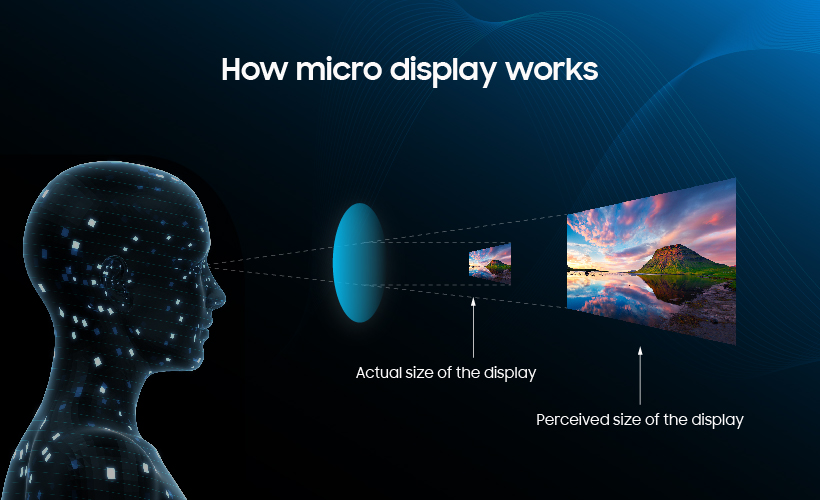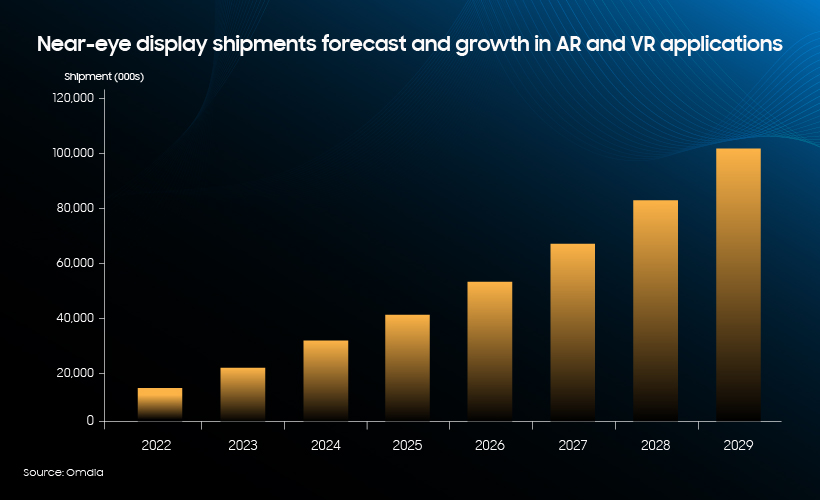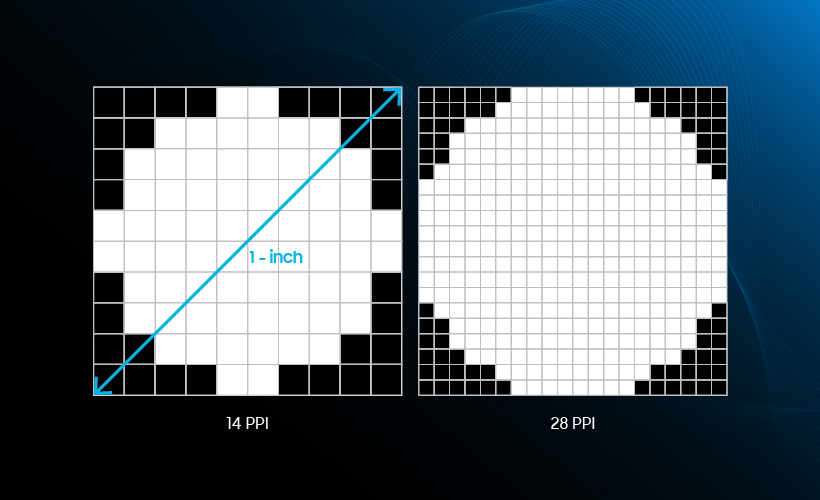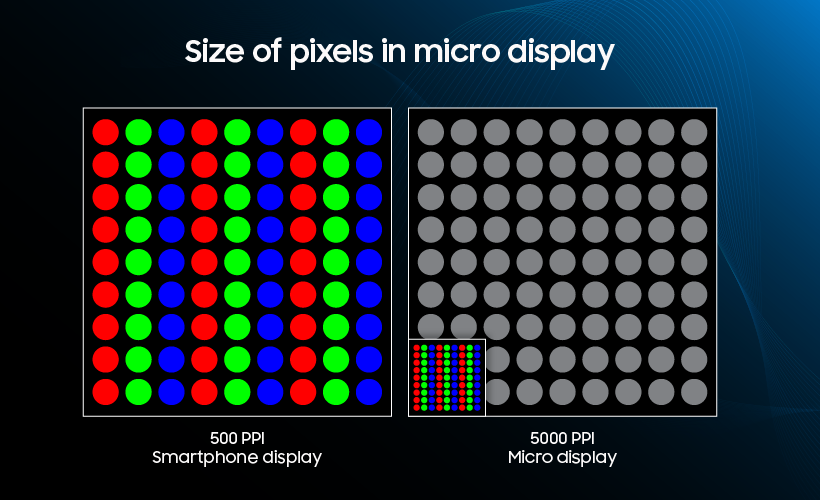
Ultra-Small yet Ultra-High: Achieving a 10-fold Increase in Micro Display Resolution
A "micro display" is an ultra-high-resolution screen known for its exceptionally high pixel density, often reaching thousands of pixels per inch (PPI), all packed in a compact size of an approximately 1-inch display. This cutting-edge display technology holds great promise as the next generation of displays, capable of delivering an immersive experience that appears many times larger than its physical dimensions while maintaining crystal-clear visuals. In particular, as the market for eXtended Reality (XR) technologies, including Virtual Reality (VR), Augmented Reality (AR), and Mixed Reality (MR), continues to expand, there's a growing surge of interest and demand in the core technology behind them—micro displays.

Growth of the XR Market Expected to Fuel Micro Display Market
The encompassing term for virtual reality technology, XR, can be broadly divided into three categories: VR, AR, and MR. VR's primary goal is to transport you into a virtual environment distinct from your current surroundings. When VR technology is effectively employed, it can offer complete immersion in an alternate world, creating a sense of being present in a different reality. In contrast, AR technology enriches the real-world setting with additional information, essentially superimposing computer-generated (CG) elements onto a real-world image. An everyday example of AR is a smartphone selfie app that lets you add features such as bunny ears or retouch your complexion in a photo. However, it's important to note that in AR, CG elements are superimposed onto real-world images and do not interact with physical objects in the real world.

MR combines features from both VR and AR by integrating real-world environments captured through a camera with a virtual overlay. This integration enables interaction between the physical environment and the virtual world. For example, envision a character in a video game, such as a fairy, appearing in your real surrounding to interact with you. Imagine your desk virtually igniting when you point at it and say a voice command such as the word "fire." While AR and VR technologies each demand distinct display capabilities, their overarching goal remains the same: delivering exceptional image quality.

According to industry forecasts, global display shipments for VR/AR will surpass 100 million units by 2029, a substantial increase from the 13.7 million units in 2022, representing a compound annual growth rate (CAGR) over seven years of about 84%.
Pixel density – a crucial element in achieving sharp Micro Displays
To ensure sharp image quality in an XR device, a high resolution is crucial. Typically, larger display screens make it easier to attain high resolution, which explains how the commercialization of 8K resolution in TVs was achievable. However, achieving such high resolution in smaller devices such as smartphones remains challenging due to the need for intricate architecture and more complex processes to accommodate the necessary pixel density on the smaller screens.
Consider the following example. A 50-inch TV boasts an area 100 times larger than that of a 5-inch smartphone screen, and a 5-inch screen holds an area 100 times greater than a 0.5-inch screen. Consequently, a 0.5-inch screen is 1/10,000th the size of a 50-inch screen. As a result, in order to achieve equal resolution, a 0.5-inch screen demands electronic circuits and pixels that are 1/10,000th the size compared to its 50-inch counterpart.
To put all this into perspective, we provide the image below. Understanding pixels per inch (PPI), a metric that indicates the number of pixels that can fit within a one-inch line on a screen, offers a valuable glimpse into the intricate technical challenges involved in developing a micro display.

When comparing a 14 PPI screen to a 28 PPI screen, both with the same 1-inch diagonal measurement, the difference in the level of detail becomes evident. A higher PPI indicates a greater number of pixels within the same area, enabling a display with more refined and intricate images. This is precisely why a 5-inch smartphone appears significantly sharper on a 500 PPI screen than on a 300 PPI screen.
Micro Display resolution, how high should we go?
Resolution and PPI are key factors that influence the sharpness of a display. Higher values for these metrics result in sharper and more detailed visual output, leading to a more immersive experience for users. While some argue that display technology has reached its apex in terms of resolution, near-eye applications of micro displays within XR demand even greater resolution. This is because when magnifying a small screen, it becomes susceptible to the "screen door effect.” This effect occurs when individual pixels and the gaps between them become visible, creating a pattern that resembles a screen door. Achieving a visual quality so lifelike that it becomes indistinguishable from reality requires higher resolutions and PPIs, prompting the need for ongoing technological advancements to turn this aspiration a reality.
Currently, the most prominent micro-display technologies are OLEDoS (OLED on Silicon) and LEDoS (LED on Silicon), both based on silicon substrates. To achieve excellent image quality with micro displays, resolutions of 4000 to 5000 PPI or higher are required.

The difference is even more pronounced when compared to smartphone displays. For example, the 6.8-inch QHD+ (3088x1440) Samsung Galaxy S23, released earlier this year, has a pixel density of 500 PPI, while micro displays require PPI that are 10 times higher.
Producing micro displays presents significantly greater challenges compared to traditional displays and addressing the challenges require tackling several ambitious goals. To achieve smaller pixel sizes, we need to transition from the conventional micrometer (㎛) process to an ultra-fine nanometer (㎚) process. Such a shift requires pioneering new reliability assessment technologies and advancing the development of more efficient materials. This is essential because as we reduce pixel size, we must also enhance brightness. Achieving the same level of brightness at half the size requires a two-fold increase in efficiency. In addition, as materials and processes evolve, we need to also innovate new driving requirements.
Exploring uncharted territory within the display industry calls for the development of groundbreaking technologies that are able to tackle existing limits. As the display industry doubles down on its research and development efforts to pioneer new frontiers, we can anticipate the emergence of displays in the near future that promise users a more immersive, detailed and advanced XR experience.

